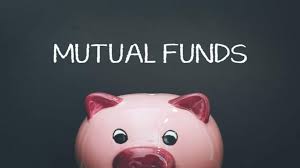On a relative risk basis, small-cap funds carry higher risk compared to midcap funds which can themselves be considered riskier than large-cap funds.
Investment in mutual fund schemes is suggested to meet your short-term, medium-term, and long-term goals. But, there are various types of MF schemes not just representing equity and debt assets but also on other parameters such as market capitalization, etc. Take, for example, the group of equity schemes which comprises of 10 different categories of equity schemes. Similarly, there are 16 types of debt mutual fund schemes.
“There are several categories of equity mutual funds schemes based on which type of companies they invest in. For instance, large-cap funds invest in companies with large market capitalization, Midcap funds invest in mid-sized companies and small-cap funds invest in smaller-sized companies. Besides that, there are multicap funds investing in all three in different proportions as per their strategy – large, mid, and small sizes of companies,” informs Col. Sanjeev Govila (Retd), a SEBI Registered Investment Advisor (RIA), and CEO, Hum Fauji Initiatives, a financial planning firm.
In addition, there are specific funds that invest only in a particular industry or a theme. “There are thematic funds which invest in companies from a specific sector like Information technology, banking sector, health care or infra. One can also invest in international equity funds, which primarily invest in equity shares, ETFs etc of foreign markets,” adds Col. Govila (Retd)
10 categories of equity mutual fund
- Multi Cap Fund
- Large Cap Fund
- Large & Mid Cap Fund
- Mid Cap Fund
- Small-cap Fund
- Dividend Yield Fund
- Value Fund/ Contra Fund
- Focused Fund
- Sectoral/ Thematic
- ELSS
So, how to make a selection of the category and where to invest? Some of them could be riskier than others and the volatility could be more in some of them. “On a relative risk basis, small caps funds carry higher risk compared to midcap funds which can themselves be considered riskier than large caps funds. Which one to take in what proportion in your portfolio will depend on this trio – your risk profile, future requirements (financial goals) and market conditions,” says Col. Govila (Retd).
Therefore, it is important to know which category of MF scheme you are investing in. Knowing this will help duplication of schemes and aid in diversification of portfolio. It is not essential to own schemes in all of the 10 categories of equity schemes rather aim to build a portfolio with adequate diversification commensurate with your risk profile. “For example, risk appetite implies ascertaining whether you have the appetite to invest in an equity fund that has a high risk, moderately high risk, or you would prefer to go for a low-risk mutual fund only,” informs Col. Govila (Retd).
Every equity fund category has its own share of risk and reward. Your financial advisor will be in a better position to suggest the right mix but here are some pointers. “If you want to keep it safe then large caps but if you want high risk- high reward then small caps. It should be a blend of everything. Personally, I would suggest 40% should be the lowest, 30% medium and 30% high. So, that way your portfolio gets balanced out,” says Rachit Chawla, CEO and Founder, Finway FSC.





































